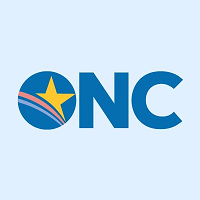 By Alex Baker and Elisabeth Myers, ONC
By Alex Baker and Elisabeth Myers, ONC
Twitter: @ONC_HealthIT
On August 1, 2022, the Centers for Medicare & Medicaid Services (CMS) announced final changes to its payment program for acute care hospitals in 2023. The FY 2023 Inpatient Prospective Payment System (IPPS) final rule also included policies for the 2023 Medicare Promoting Interoperability Program, which rewards eligible hospitals and critical access hospitals (CAHs) for the meaningful use of certified electronic health record (EHR) technology, and for the Inpatient Quality Reporting Program, which requires hospitals to report data in key areas.
Important new elements of these programs can help advance nationwide health information exchange, reduce administrative burden for providers, and incentivize effective use of health IT in 2023 and beyond, including policies to:
- Incentivize exchange of information under the Trusted Exchange Framework and Common Agreement (TEFCA);
- Expand electronic reporting of information to public health agencies; and
- Capture information on social determinants of health to inform referrals for social care needs.
In this two-part blog series, ONC will unpack these provisions and highlight the potential they hold to advance interoperability by driving hospital and CAH use of important health IT capabilities connected to ONC programs. This first blog looks at IPPS measures related to the use of networks that facilitate health information exchange.
Promoting Health Information Exchange
As part of the 2023 IPPS final rule, CMS finalized a new measure under the health information exchange (HIE) objective of the Promoting Interoperability Program that creates a powerful incentive for hospitals to lead the way in advancing truly robust information exchange at a national scale.
Eligible hospitals and CAHs that participate in the Promoting Interoperability Program in 2023 will have the opportunity to report on a new “Enabling Exchange under TEFCA” measure. This measure will reward hospitals that use certified EHR technology to enable “secure, bi-directional exchange of information” using TEFCA.
Building on the 21st Century Cures Act, TEFCA is an initiative co-led by ONC that aims to establish a universal floor for interoperability across the country. The Common Agreement, released by ONC in January 2022, establishes the infrastructure model and governing approach for users in different health information networks (HINs) to securely share basic clinical information with each other—all under commonly agreed-to expectations and rules, and regardless of which network they happen to be in. The Trusted Exchange Framework describes a common set of non-binding, foundational principles for trust policies and practices that can help facilitate exchange among HINs.
Eligible hospitals and CAHs that attest to exchanging information under TEFCA can receive full credit for the Health Information Exchange objective under the Promoting Interoperability Program. While the original measures under the HIE objective required providers to report on their performance, TEFCA participants can simply attest that they are engaged in bi-directional participation via TEFCA, simplifying reporting requirements to participate in the program. Under the new measure, those who participate in a network supported under TEFCA will automatically meet the Promoting Interoperability Program’s standard for robust health information exchange.
By linking the Promoting Interoperability Program to participation in exchange facilitated by TEFCA, CMS is supporting the advantages that networks with greater capacity and connections can provide when it comes to care coordination. Moreover, ONC believes this new incentive in the Promoting Interoperability Program can help to drive early participation in TEFCA, creating a wave of momentum toward nationwide health information exchange.
Expanding IPPS’ Role in Public Health and Health Equity Reporting
In Part 2 of this blog series, we will highlight additional provisions in the IPPS final rule that leverage health networks and health data sharing for better reporting on public health, as well as new quality measures driving health equity through widespread capture of social determinants of health (SDOH) information.
This is the first post in a blog series about how the CMS IPPS Rule is building on ONC initiatives.
This article was originally published on the Health IT Buzz and is syndicated here with permission.
